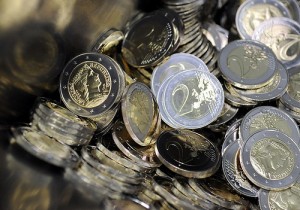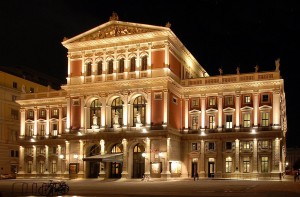
With the start of the new year Latvia have officially adopted the euro as its currency, replacing the lats which were introduced after the republic’s independence in 1991.
We use cookies to help you navigate efficiently and perform certain functions. You will find detailed information about all cookies under each consent category below.
The cookies that are categorized as "Necessary" are stored on your browser as they are essential for enabling the basic functionalities of the site. ...
Necessary cookies are required to enable the basic features of this site, such as providing secure log-in or adjusting your consent preferences. These cookies do not store any personally identifiable data.
Functional cookies help perform certain functionalities like sharing the content of the website on social media platforms, collecting feedback, and other third-party features.
Analytical cookies are used to understand how visitors interact with the website. These cookies help provide information on metrics such as the number of visitors, bounce rate, traffic source, etc.
Performance cookies are used to understand and analyze the key performance indexes of the website which helps in delivering a better user experience for the visitors.
Advertisement cookies are used to provide visitors with customized advertisements based on the pages you visited previously and to analyze the effectiveness of the ad campaigns.

With the start of the new year Latvia have officially adopted the euro as its currency, replacing the lats which were introduced after the republic’s independence in 1991.

The New Year’s Concert in Vienna is a longstanding and very popular tradition on New Year’s Day, which is broadcast on TV not only in Austria and the German-speaking countries of Europe but also in more than 70 other countries around the world. Since 1939 the concert is held in the Großer Saal (Large Hall) in the Wiener Musikverein, situated in the city centre of Vienna.
The classical music performed always include works written by the famous Strauss family.
Due to the shifting global climate the nothern sea route between Europe and East Asia has, if not become a viable alternative to the common sea route, so at least a potential choice.
The Stena Polaris freighter has now successfully utilized the route on a journey from Europe to East Asia, thereby showing that this route is starting to be an option. The voyage has been chronicled on the ship’s website at www.stenanorthernsearoute.com.
The German federal election became a success for incumbent chancellor Angela Merkel and her CDU, but simultaneously something of a problem in that the liberal FDP, the traditional CDU/CSU ally, for the first time in German post-war history saw themselves voted out of the Bundestag. This means that Angela Merkel now has to find a new coalition partner, which by necessity would mean either the social democrats or the greens. In either of these cases it will mean lengthy and difficult talks before any coalition may be put in place.
The most likely outcome is a new grand coalition between the Christian democrats and the Social democrats, but this won’t be achieved without a great deal of bargaining. The SDP is most likely wary of sitting in a coalition as the junior partner again, with clear memories of the not all that rewarding time in the latest grand coalition of 2005-2009. The Greens on the other hand are perceived to be further from the CDU/CSU in ideology, even if the differences in key areas such as the nuclear energy question much have disappeared after the Christian democrats’ u-turn after Fukushima. A CDU/CSU-Green coalition is not ruled out, but remains the more unlikely option for now.
One of the most famous art museums in the world, the Dutch Rijksmuseum in Amsterdam has reopened with a grand ceremony after several years of renovations and construction of new space for the multitude of art in its collections. Among the most famous in the long list of invaluable classical artworks are Rembrandt’s The Night Watch and works by Frans Hals, Johannes Vermeer and Vincent van Gogh.
The museum now has 80 galleries, some of which – in very Dutch fashion – are located under the sea level which together contains more than 8000 objects of art, spanning 800 years of history.
Source: BBC News

The Swedish writer Göran Hägg made a note in his book about the popes throughout history that the 20th Century popes seemed to fall into a pattern of alternating jovial pastoral men with more teological academical ones and the current election seems to follow neatly in that pattern. The newly elected pope Francis is much more like late John Paul II than his immediate predecessor Benedict XVI. Once again the Roman Catholic Church has at its helm a man that is following a pastoral call.

The Dutch Sleeping Around concept is showing off a new way of modern living – utilizing a standard shipping container as the base. Judging from the images it is better than it first sounds.
See www.sleepingaround.eu for more about the concept.
A new Dutch cabinet has been installed after the latest election. The new cabinet is a coalition government consisting of the liberal VVD and the social democratic Labour party PvdA. Each party will have ten minister posts. Mark Rutte (VVD), who also was prime minister in the outgoing cabinet, will continue as PM.
The new government is seen as more pro-Europe and pro-austerity than the previous coalition which fell on disagreement over budget cuts.
Sources: De Telegraaf, EUobserver.com
The electricity provider EKZ in the canton of Zürich will build the largest photovoltaic solar power plant in Swetzerland with a projected 9 MW output.
Source: NZZ.ch
For the first time has a Pirate Party entered the political arena for real. With nine percent of the votes in the election in Berlin, the German Piratenpartei managed to get a good bit above the threshold limit and enters the Berlin Abgeordnetehaus where it will have 15 of the 152 seats in the parliament.
Is this the beginning of a new political movement getting a foothold in German and European politics, much like the green parties once started their road to become a serious part of the European political landscape, or is it only a temporary fad and more of a protest against the established parties? It is yet a little too early to tell. There certainly are signs that the issues that the pirate parties count as their core areas – personal integrity, data protection, net freedom and the likes – are growing in importance, much like during the 1970s and 1980s the environment got in focus. The question is if this new set has the momentum needed to foster a new political alignment. That the Pirate Party get their first real success in Berlin is in itself not all that surprising. The city has a relatively large number of people with alternative lifestyle views and on top of that a booming creative and internet-focused culture. Even so it still must be seen as somewhat surprising that almost one tenth of the voters chose to give their vote to this yet untested party. The future will tell if the Pirates manage to repeat their electorial success in other, more traditional parts of Germany or not.